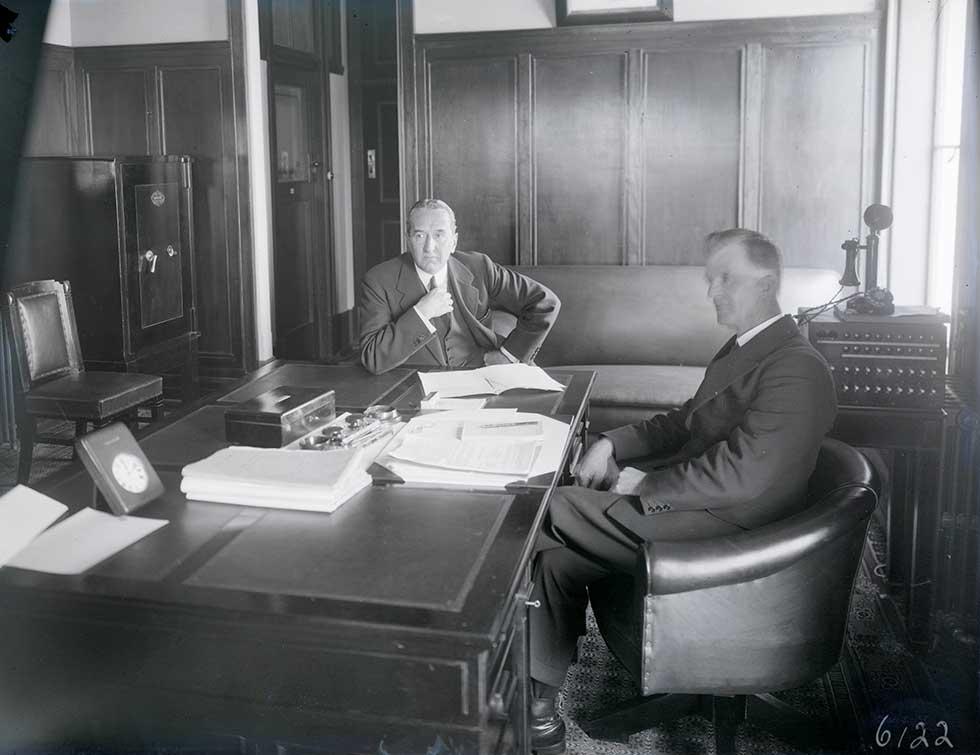


About this record
This is a black-and-white photograph showing Prime Minister Stanley Bruce and James Scullin seated at a desk in the prime minister's office in (Old) Parliament House, the day before Scullin was sworn in as the new Australian prime minister. Scullin is seated in a leather chair in front of the desk and Bruce is seated to his right at the side of the desk. Papers and writing materials cover much of the desk and a telephone is visible in the background. The room is wood panelled.
Educational value
-
This photograph, from the first week of Scullin's government, probably records the handing over of power by Stanley Bruce (1883–1967) to James Scullin (1876–1953) after the Labor Party's victory in the 1929 election. Bruce lost the election and his own seat after a series of strikes in 1927 and 1928 prompted him to introduce the Maritime Industries Bill, which would dismantle Commonwealth arbitration. His own Nationalist Party split when voting on the Bill, forcing Australia to the polls.
-
Stanley Bruce served as Australia's eighth prime minister from 9 February 1923 to 22 October 1929, the day after this picture was taken. He had only been in Australian politics since 1918 and became Australia's second-youngest prime minister. Bruce took office during a turbulent time in his own party, following the resignation of then Prime Minister Billy Hughes. As leader of the new Nationalist–Country coalition government, Bruce was considered to be politically conservative.
-
James Scullin, shown here taking office as Australia's ninth prime minister, successfully campaigned against Bruce in the 1929 election. He won largely because his policy was to retain the arbitration system, which Bruce had threatened to dismantle. Scullin's experience of financial matters and taxation would also have been valued in a falling economy. The Australian Labor Party won by a considerable margin, holding 46 of 75 lower house seats. Scullin had become party leader in 1928 after 25 years in politics.
-
In the late 1920s the political and economic scene was volatile. Scullin became prime minister only days before the collapse of the United States stock market in October 1929, and the Great Depression was looming. Australia was already in a financially precarious position due to high unemployment and failing wool and wheat exports. Australian governments and businesses had borrowed heavily from overseas and struggled to repay the debt as falling exports reduced incomes and revenue.
-
Two years after this photograph, Scullin lost the prime ministership after a series of political and economic blows. He had been hampered by the need to pay Australia's overseas debt and his refusal to reduce pensions. His opponents, including members of his own party, demanded that pensions be cut to reduce expenditure. The Labor Party split and Scullin lost the election on 19 December 1931. He resigned leadership of the Australian Labor Party on 1 October 1935. He remained in politics until 1949, and was an advocate of taxation reform.
Acknowledgments
Learning resource text © Education Services Australia Limited and the National Archives of Australia 2010.
Related themes
Need help with your research?
Learn how to interpret primary sources, use our collection and more.


